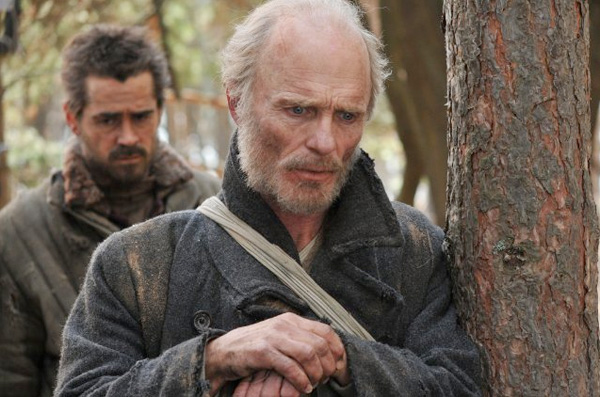 |
| "Ed Harris and Colin Farrell in 'The Way Back.'" |
By Anne Applebaum
Slate.com, January 24, 2011
"'It's based on a true story.' Or 'It's truth, but stranger than fiction.' Or even, 'You couldn't make it up.' When Peter Weir gets sent film scripts these days, most of them advertise themselves as 'true.' That wasn't always the case: Weir (who made Gallipoli, Witness, and Master and Commander, among other movies) dates the tilt away from fiction and toward fact back to Sept. 11, 2001, the day when reality suddenly seemed 'exactly like a Hollywood movie.' The growth of reality television surely explains the change, too. So does Hollywood's bottom line. 'Reality is a brand which people can sell' says Peter Morgan, who wrote the script for The Queen -- a movie based on the (true) story of Diana, Princess of Wales: 'If people need to explain what a film is about, the film stands very little chance of surviving.' ... But what about stories that are true but totally unfamiliar? Do we -- can we -- still watch people in real situations of a kind we've never thought about before? As it happens, Weir's latest movie, The Way Back, might answer this question. For The Way Back is a unique and groundbreaking film: It represents Hollywood's first attempt, ever, to portray the Soviet Gulag in meticulously researched detail. I know this to be true because I was a historical consultant to Weir. He asked me for advice because I wrote a book about the Gulag, but he did plenty of research on his own, as his questions reflected. Once, he called to ask whether the guards leading the prisoners off the train would have been wearing the same uniforms as the guards receiving them at the camp. (Answer: no.) The Way Back is based on a book called The Long Walk, by Slawomir Rawicz, a Gulag survivor who 'borrowed' his escape story: Three Poles crossed the Himalayas from Siberia into India in the 1940s; the Polish consulate recorded their arrival; one of them told his story to Rawicz. But the film is true in every way that matters. Many of the camp scenes are taken directly from Soviet archives and memoirs. The starving men scrambling for garbage, the tattooed criminals playing cards for the clothes of other prisoners, the narrow barracks, the logging camp, the vicious Siberian storms. Among the very plausible characters are an American who went to work on the Moscow subway and fell victim to the Great Terror of 1937, a Polish officer arrested after the Soviet invasion of Poland in 1939, and a Latvian priest whose church was destroyed by the Bolsheviks. These scenes and people are realistic. But they are definitely not familiar. ...
I haven't found any reviews, so far, that hail this as Hollywood's first Gulag movie, perhaps because hardly anyone noticed that there weren't any before. Weir told me that many in Hollywood were surprised by the story: They'd never heard of Soviet concentration camps, only German ones. If you need to explain what a film is about, the film is in trouble -- and this one almost was. Weir had difficulties getting it distributed and some problems explaining the final scene to his financial backers. Yet that final scene is exactly what makes this movie 'real': Instead of returning home at the end of his harrowing journey, the hero is shown 'walking' across time -- across the Soviet occupation of central Europe, across the Hungarian Revolution of 1956, the Prague Spring of 1968 -- finally returning home to Poland only after communism collapses. The absence of an instant happy ending also bothers some of the film's reviewers, even though, in 'real life,' there were no happy endings for anyone who lived in the eastern half of Europe after the end of World War II. People who escaped from the Gulag, survived the war, or evaded the Holocaust didn't necessarily live happily ever after. Perhaps that's a truth too difficult to learn from a movie."














No comments:
Post a Comment
Please be constructive in your comments. - AJ